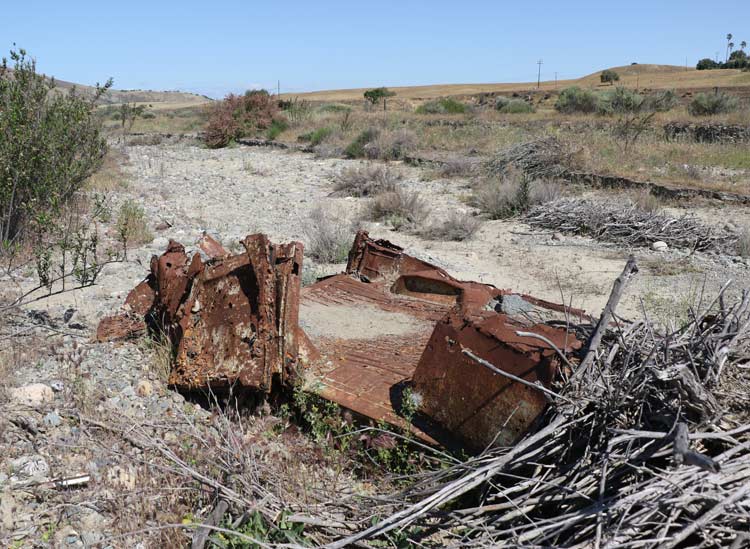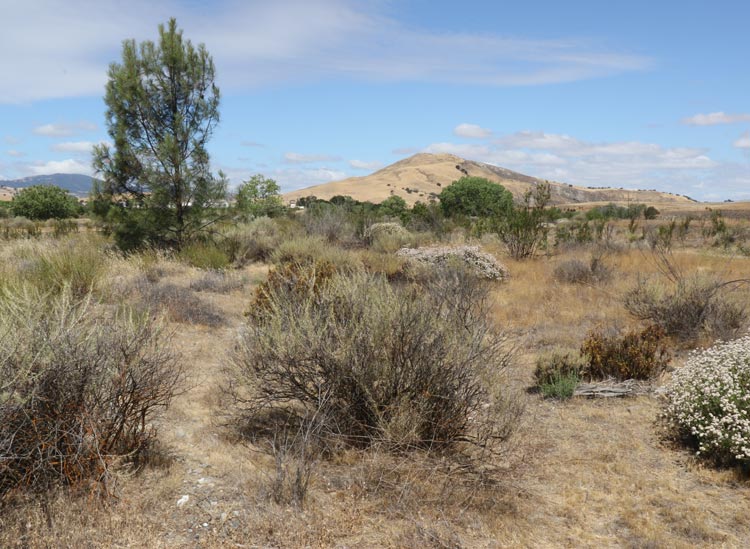 |
Exploring a dry creek bed, came upon an area rich in nectar-producing plants.
In view are deerweed, white sage, buckwheat. |
 |
| And where there's nectar, there's pollinator insects. |
 |
Native bees like this one, access nectar by boring into the base of
trumpet-shaped flowers like this Sticky Monkeyflower blossom. |
 |
| There are also predator insects that await the unwary. |
 |
| This damselfly is also predator. She's got a tiny fly in her mouth. |
 |
Beautiful example of a Bernardino Dotted Blue butterfly.
Note its size when compared to the tiny Buckwheat blossom.
|
 |
| Pair of Dotted Blue's getting acquainted. |
 |
| Whither she goest, he will follow. |
 |
| A female Great Copper busily nectar-sipping. |
 |
| But love was in the air for a male Common Buckeye. |
 |
| She fluttered her wings to drive him away. After all, she was having lunch. |
 |
| Eventually, he got the message and flew off to a "separate table". |
 |
| A Common Buckeye and a Great Copper are unsuitable for pairing. |
 |
| But this male Great Copper is a perfect match. |
 |
| Picking my way through this area. |
 |
| I startled a tiny white-footed mouse. |
 |
| It took off at high speed. |
 |
| Just as well as there was a 4-foot Kingsnake foraging in the same area. |
 |
| Lots of CA Buckwheat in various stages of bloom. |
 |
| Likewise for White Sage. |
 |
| Female Great Copper on White Sage. |
 |
Painted Lady spreads her wings to bask in the morning sun.
(Note the "beauty mark" next to her right eye spot.)
|
 |
| This Northern White Skipper was content basking on the ground. |
 |
| The extent of the day's wanderings. |
 |
| To some, "scrub" like this looks dull, uninteresting. |
 |
| To others, it has a beauty all its own. |
|
| 3 May 2020 |
 |
| Dry creek bed east of Hwy 25. |
 |
| Good habitat for a variety of wildlife, including the Western Road Runner. |
 |
| Keen predators, their diet includes lizards, snakes, small rodents, fledgling birds. |
 |
| Extremely wary, they'll flee at the sight of humans. |
 |
| They have been clocked at 15-20 miles an hour. |
 |
Tobacco Tree saplings line the creek bed. Introduced from
South America in the 1700s, all parts of the tree are toxic. |
 |
| However, insects and hummingbirds draw nectar from its flowers with no ill effects. |
 |
| So out of place in such a harsh environment, our native Sticky Monkeyflower. |
 |
| Another valuable nectar provider for insects. |
 |
California Buckwheat provides essential nectar
for insects when other sources die back. |
 |
| Common to this area, a Bernardino Dotted Blue. |
 |
| Hmmm, is this sandstone rock concave? (Nope... It wasn't... Bummer!)
|
 |
However, during another visit, I found a stone pestle among creek bed rocks.
It's planed on two sides and fits a grip perfectly.
|
 |
| Heart-of-the-West |
 |
| Interesting pattern in a dry side channel. |
| |
|
| 13 June 2020 |
Revisiting Tres Pinos Creek |
 |
| How quickly seasons change. |
 |
| Lots of California Buckwheat still in bloom. |
 |
But White Sage and Deer Weed were no longer blooming.
Not a gossamer wing fluttered anywhere. |
 |
| Non-native Tree Tobacco were still in flower. |
 |
This single Cabbage White was the only butterfly I saw.
Its color pattern indicates it's a summer-marked female. |
 |
| Lots of small-game trails between seed-bearing plants. |
 |
| Quail, bush-rabbit, ground squirrel. |
 |
| Desiccated section of an old Willow tree trunk. |
|
|
|
















































